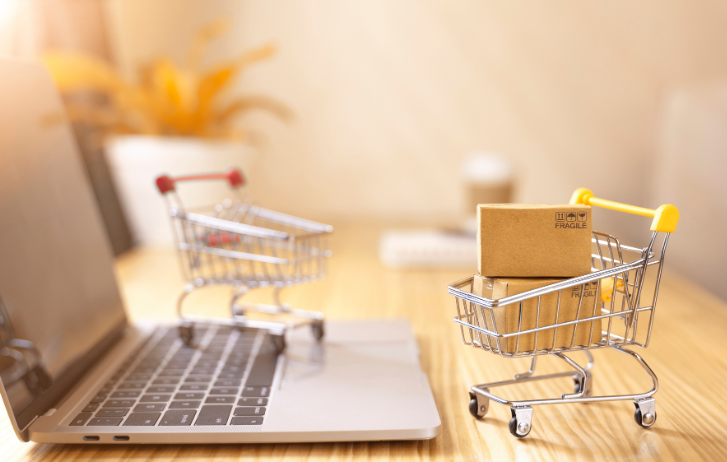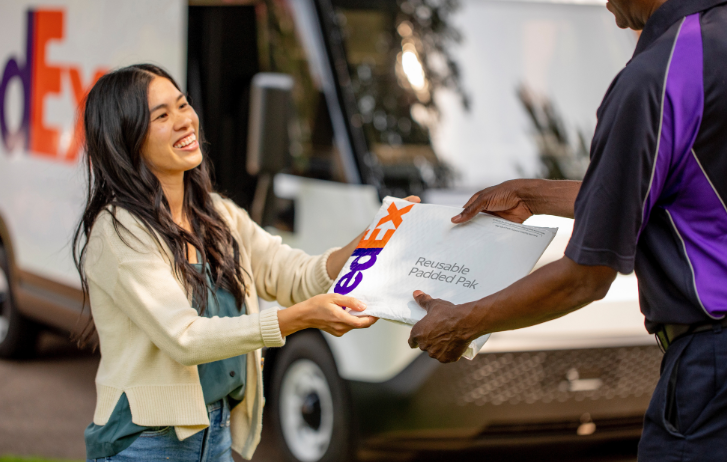
Is An APAC Dropshipping Business Still Profitable In 2025?
By Kawal Preet | August 14, 2025
The APAC dropshipping business is changing with new trends like AI-driven operations and hybrid fulfillment models. We explore key shifts in the industry, offering insights for e-commerce dropshipping entrepreneurs to stay competitive and profitable.
- The Asia Pacific dropshipping market, valued at USD 100.14 billion in 2025, is projected to reach USD 621.37 billion by 2033.
- The rise of hybrid fulfillment models in the region, combining local warehouses with international sourcing, is helping dropshipping businesses improve delivery speed.
- Half of the consumers in APAC report buying more sustainable products, pushing dropshipping businesses to adopt eco-friendly practices.
What began as a low-cost entry point into e-commerce has matured into a more sophisticated model shaped by speed, visibility, and fulfillment strategy.
The dropshipping industry in Asia Pacific (APAC) today is vastly different from how it started. Small- and medium-sized enterprises (SMEs) who once relied on overseas suppliers and long delivery windows are now building regional fulfillment networks and using data to anticipate demand.
Rewinding the rise: What is dropshipping, and why did it take off?
Dropshipping is a retail fulfillment method where SMEs list products online without holding any inventory. When a customer places an order, the seller forwards it to a third-party supplier, who then ships the product directly to the customer. This model contrasts with traditional e-commerce, where businesses must manage inventory, warehousing, and last-mile delivery themselves.
Dropshipping surged between 2017 and 2021, boosted by the rise of platforms like Shopify, WooCommerce, and regional e-marketplaces such as Shopee and Tokopedia. First-time entrepreneurs across Southeast Asia exploring dropshipping as beginners were able to build successful ventures from their laptops. Many of them saw fast returns through paid social campaigns and trending products.
Valued at USD 100.14 billion in 2025, the APAC dropshipping market is anticipated to grow to USD 621.37 billion by 2033. This sustained growth shows that dropshipping remains an attractive e-commerce model, driven by strong mobile commerce, growing adoption of digital payments, and greater access to cross-border manufacturing.
A changed landscape: What dropshipping looks like in 2025
Today, e-commerce dropshipping is no longer a shortcut to quick wins. Businesses now face more demanding customers, tightening profit margins, and increasing saturation across digital channels. From AI-powered product selection to local fulfillment partnerships, several trends are reshaping how dropshipping businesses operate in APAC – often in ways that weren’t possible just a few years ago.
1. Smarter product discovery and operations with AI
Unlike traditional e-commerce businesses that typically manage their own inventory and marketing pipelines, dropshipping sellers face the added complexity of reacting to market shifts in real time without owning the products they promote.
To understand how to dropship effectively today, many sellers are adopting AI to automate decision-making at scale. In fact, over 50% of e-commerce businesses are already using AI. Tools like Dropispy and Minea track viral product trends across TikTok and Meta, giving SMEs real-time insight into consumer preferences. This is especially useful in dynamic, youth-driven markets like Indonesia and the Philippines. Sellers also rely on AI for pricing optimization, ad targeting, product copywriting, and customer service.
To help APAC SMEs with shipping documents needed for cross-border dropshipping (specifically, inbound shipments to the US), we developed two AI-powered solutions in FedEx Ship Manager: Customs AI and a Harmonized Tariff Schedule (HTS) code lookup feature.
Our Customs AI chatbot prompts customers to provide an appropriate item description and assists them in selecting the corresponding HS code. The HTS code lookup feature auto-suggests HTS code options along with a confidence score based on the entered item description, from which the customer can choose.
2. Shift toward local and hybrid fulfillment
The “list-and-ship-from-overseas” model that defined early dropshipping is giving way to more localized strategies. In cities where urban consumers increasingly demand same-day or next-day delivery, SMEs are adopting hybrid fulfillment models that balance international sourcing for cost-efficient inventory with local micro-fulfillment centers or third-party logistics providers for faster delivery.
In some cases, sellers hold limited stock of fast-moving items locally while continuing to dropship slower-moving SKUs from regional hubs.
E-commerce platforms like Shopee and Lazada also encourage this shift by prioritizing sellers who offer faster shipping in their algorithms and promotions. As logistics infrastructure across Southeast Asia improves, this hybrid approach is becoming more viable, helping dropshippers strike a balance between cost control and delivery performance.
3. Logistics as a competitive advantage
For dropshippers who don't control inventory, packaging, or delivery infrastructure, logistics is a strategic differentiator. The ability to offer reliable, transparent, and speedy cross-border delivery is now a make-or-break factor for APAC dropshipping businesses.
FedEx helps modern e-commerce dropshipping businesses thrive by automating shipment paperwork, offering near real-time tracking, and reducing failed deliveries through flexible delivery options with FedEx Delivery Manager.
Additionally, sellers can integrate FedEx shipping APIs directly into their storefronts, simplifying labeling, tracking, and returns – all from within their existing workflows.
4. The rise of white-label and niche markets
A growing number of APAC dropshippers are shifting away from generic catalog reselling to build their own branded product lines. White-labeling allows SMEs to differentiate themselves through customized packaging, brand storytelling, and greater control over pricing. This trend is especially strong in lifestyle, beauty, wellness, and tech accessories, where perceived brand value plays a significant role in consumer decision-making.
Simultaneously, B2B dropshipping is gaining traction in categories like office supplies, industrial equipment, and medical tools. These sectors value reliability, availability, and professional-grade quality, all of which require tighter coordination with suppliers and clear service-level agreements.
Sellers operating in the B2B space also benefit from higher order volumes and longer customer retention cycles, though they must meet more complex compliance and documentation requirements.
5. Sustainability is becoming a selling point
Environmental awareness among APAC consumers is growing fast, with half of the consumers in this region reporting buying more sustainable products. This presents unique challenges for dropshippers, who often lack control over packaging, shipping methods, or supplier practices.
Even so, many are finding creative ways to integrate sustainability into their value proposition. Some SMEs select suppliers that offer environmentally conscious products or biodegradable packaging, while others participate in carbon offset programs. Simply listing estimated carbon impact or eco-ratings on product pages is another way to differentiate.
6. Social commerce and virality
In 2025, shopping and entertainment are deeply intertwined. Platforms like TikTok Shop and Shopee Live are driving a new wave of product discovery, particularly in Southeast Asia. For many consumers, a livestream or short-form video is now the first interaction they have with a product.
Dropshippers are tapping into specific, value-driven segments, such as sustainable lifestyle products or regional artisan goods, catering to consumers who prefer to buy from brands that align with their values. Social media, especially platforms like Instagram, TikTok, and Facebook, has enabled sellers to build micro-brands with authentic voices and targeted offerings, making it easier for businesses to connect with and convert niche audiences.
But turning social engagement into conversion requires operational readiness. When a product goes viral, fulfillment must scale fast. Reliable logistics can make the difference between a fleeting opportunity and a lasting relationship.
Pros and cons of dropshipping: Is it still viable in 2025?
Like any business model, dropshipping comes with trade-offs, and understanding them is key to long-term success.
The pros
- Low startup costs: Sellers can enter the market without investing heavily in inventory, warehousing, or logistics.
- Geographic flexibility: Dropshipping allows businesses to target multiple markets without a physical presence, leveraging cross-border fulfillment for global reach.
- Scalability: As demand grows, businesses can scale by adding more suppliers and extending reach, without the need for additional infrastructure.
The cons
- Thin margins: Increased competition, often with little differentiation, can result in slim profit margins, particularly for generic products.
- Logistics dependency: Since dropshippers don’t control inventory, the speed, reliability, and quality of deliveries can be challenging to manage. Working with an experienced logistics provider like FedEx can help ensure consistent and timely fulfillment.
- Limited control over customer experience: Without control over the fulfillment process, managing quality assurance, packaging, and returns can be difficult. Choosing the right logistics provider is key to streamlining these processes and delivering a seamless experience to customers.
In short, dropshipping is still viable in 2025. But success now depends on how well SMEs can adapt to a more competitive, data-driven environment.
The model has evolved from a low-risk side hustle to a fast-moving, logistics-reliant operation. Dropshipping businesses today require a clear niche or brand differentiation, strong logistics and fulfillment partnerships to meet rising customer expectations, and the ability to leverage AI and automation to stay agile.
For sellers who can successfully navigate these challenges, dropshipping remains a powerful and flexible model for growth in APAC’s booming e-commerce economy. At FedEx, we provide the logistics and fulfillment backbone to help dropshipping businesses stay competitive – ensuring reliable, fast delivery to meet the demands of today’s consumers.
SHARE THIS STORY
- 85% Of APAC Businesses Plan To Expand Into Europe, According To New FedEx Report
- Generative AI: A New Frontier
- How To Ship A Giant Panda
- The Rise Of Intra-Asia Trade: Opportunities In The China-Southeast Asia Corridor
- Where Do Old Planes Go When They Retire?
- What’s So Dangerous About Coconuts? Your Guide To Dangerous Goods Logistics
Sign up now and save on your shipping rates!
Sign up now and earn discounts by shipping instantly with FedEx Ship ManagerTM at fedex.com.
Recommended For You

5 Financial Tips For Expanding An E-Commerce Brand
Percy Hung, entrepreneur & CEO of revenue-based financing platform Choco Up, shares tips for managing the costs of expanding an e-commerce business.
Read More
The Social Shopping Landscape Is Shifting: The 2025 Trends You Need To Know
In Asia, online shopping trends evolve fast, driven by changing consumer habits. Check out the top trends for 2025.
Read More
The 5 Proven E-Commerce Features Your Online Store Needs
As consumer behavior shifts and online shopping becomes the norm, SMEs need to build a smart, intuitive online store that converts again and again.
Read More


